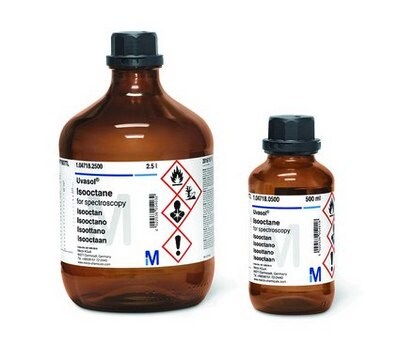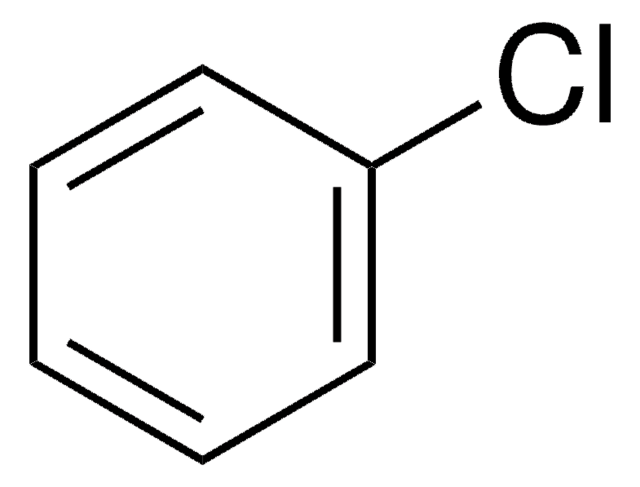371696
Tetrachloroethylene
anhydrous, ≥99%
Sinónimos:
PCE, Perchloroethylene
About This Item
19 mmHg ( 25 °C)
Productos recomendados
grade
anhydrous
Quality Level
vapor density
5.83 (vs air)
vapor pressure
13 mmHg ( 20 °C)
19 mmHg ( 25 °C)
assay
≥99%
form
liquid
technique(s)
FTIR: suitable
impurities
<0.002% water
<0.005% water (100 mL pkg)
evapn. residue
<0.0005%
refractive index
n20/D 1.505 (lit.)
bp
121 °C (lit.)
mp
−22 °C (lit.)
solubility
water: soluble 0.15 g/L at 25 °C
density
1.623 g/mL at 25 °C (lit.)
SMILES string
Cl\C(Cl)=C(\Cl)Cl
InChI
1S/C2Cl4/c3-1(4)2(5)6
InChI key
CYTYCFOTNPOANT-UHFFFAOYSA-N
¿Está buscando productos similares? Visita Guía de comparación de productos
General description
Application
signalword
Warning
Hazard Classifications
Aquatic Chronic 2 - Carc. 2 - Eye Irrit. 2 - Skin Irrit. 2 - Skin Sens. 1 - STOT SE 3
target_organs
Central nervous system
Storage Class
6.1C - Combustible acute toxic Cat.3 / toxic compounds or compounds which causing chronic effects
wgk_germany
WGK 3
flash_point_f
No data available
flash_point_c
No data available
ppe
Eyeshields, Gloves, type ABEK (EN14387) respirator filter
Elija entre una de las versiones más recientes:
¿Ya tiene este producto?
Encuentre la documentación para los productos que ha comprado recientemente en la Biblioteca de documentos.
Los clientes también vieron
Nuestro equipo de científicos tiene experiencia en todas las áreas de investigación: Ciencias de la vida, Ciencia de los materiales, Síntesis química, Cromatografía, Analítica y muchas otras.
Póngase en contacto con el Servicio técnico








